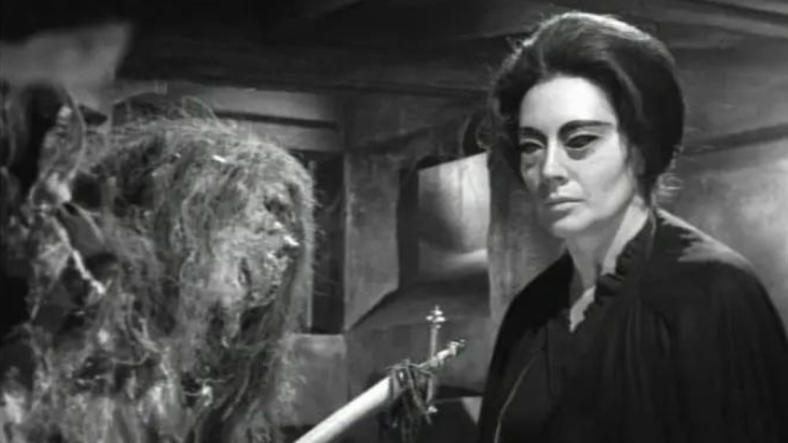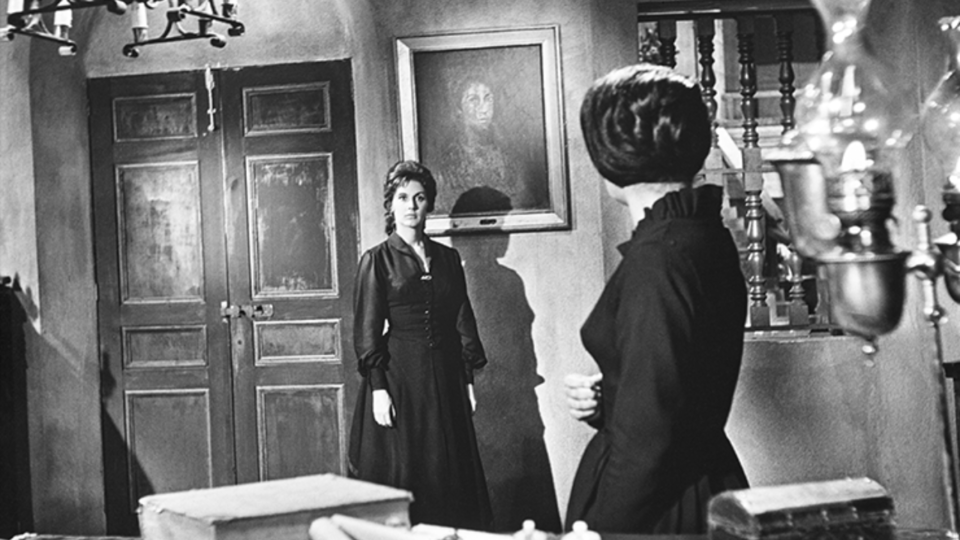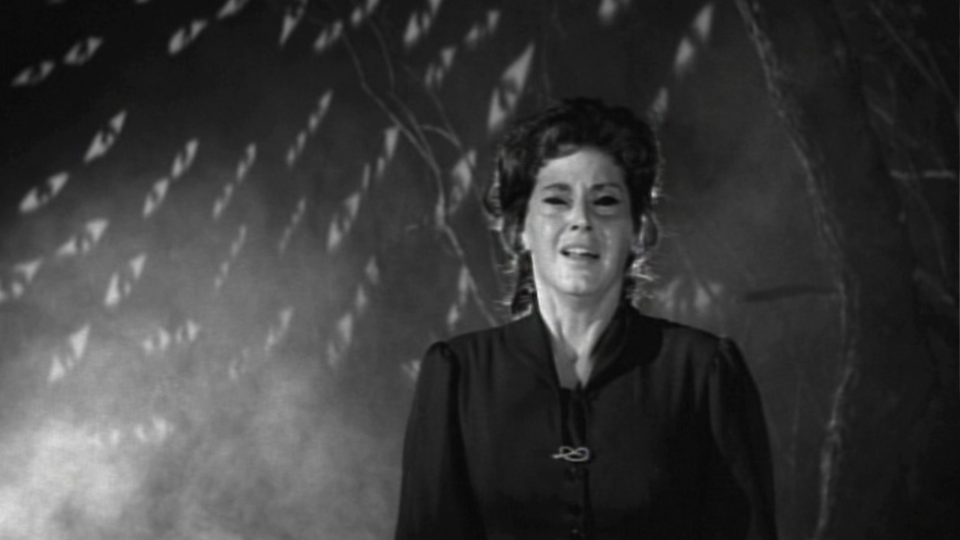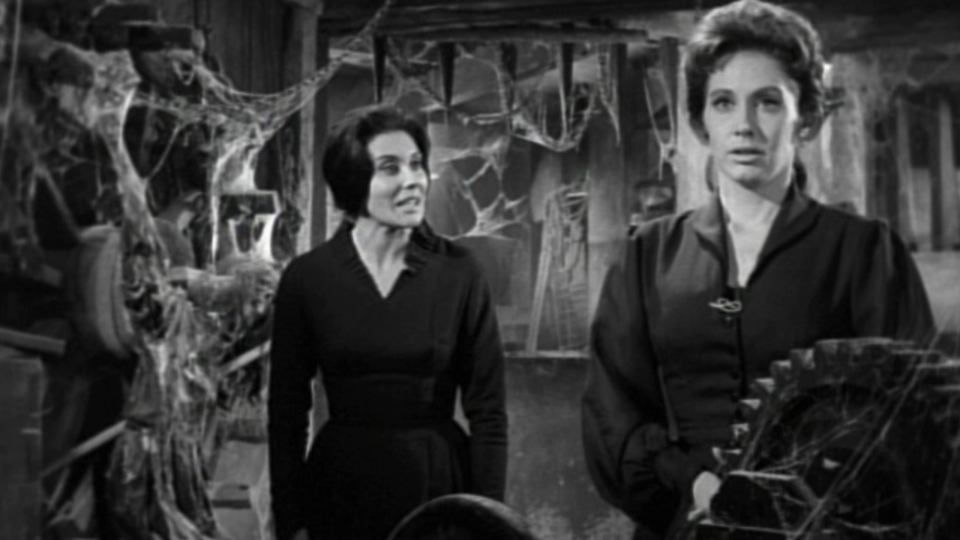‘The Curse of the Crying Woman’ Is The Best Adaptation Of La Llorona

With 96 films under his belt, Rafael Baledón became a prolific director during The Golden Age of Mexican Cinema. Baledón’s massive filmography from 1953 to 1988 is easy to get lost in. Within it lies the horror gem The Curse of the Crying Woman. The film is not only my favorite iteration of La Llorona, but I believe it stands as the best cinematic depiction of this Latin American folktale to date. The film strays from the narrative involving the death of La Llorna’s children being the catalyst to her vengeful act. Influenced by her story, Baledón creates a film about a woman embracing a family curse to achieve omnipotent power.
The Curse of the Crying Woman follows Amelia (Rosita Arenas) and her husband Jaime (Abel Salazar) on the eve of her 25th birthday. After being shunned for her entire life by her Tia Selma (Rita Macedo), Amelia is finally invited to meet Selma. They arrive at Selma’s lonely mansion and are greeted by her helper Juan (Carlos López Mocetezuma).
After unpacking their suitcases, the newlywed couple wanders around the cobwebbed-infested mansion as they wait for Selma to make her grand appearance. Once formal introductions take place, Jaime excuses himself and leaves the two women be. Selma tells Amelia about their lineage to La Llorona, the curse that is tied to it with immortality, and Selma’s journey to gather omnipotent power through witchcraft. Refusing to take part in the ritual, Amelia attempts to free herself and Jaime from the clutches of Selma by not accepting the curse when the clock strikes midnight.

Depicting the Origins of La Llorona
While Amelia and Selma’s story is set in contemporary Mexico, the origins of La Llorona is placed within colonial times. This is a commonly used story trait with films surrounding La Llorona. A recent example such as The Legend of La Llorona also takes place in contemporary Mexico. In the film her origins are shown to the viewer through a set of flashbacks. The same happens in The Curse of the Crying Woman. Baledón uses a flashback to tell the story of La Llorona in a stylish and creative manner.
If done wrong, flashbacks can halt a story’s momentum especially when they are placed at the midpoint of the film. What Baledón does to avoid this is switch the film to its negatives which creates an ominous ambience as the white overtakes the screen and the black outlines the silhouettes of the bodies.
This is when Jaime and the viewers learn about Baledón’s rendition of La Llorona’s origins. During the colonial era there was a witch known as Doña Marina. What made her quickly infamous within her village was her choice to disregard the patriarchy as she desired to become powerful through witchcraft. Her lust for power sends her on a journey of blood and crime until she is condemned by the men surrounding her. Unknowing of her immortality, Doña Marina is left with a dagger in her heart. Her body dies but her soul continues as the curse in her lineage. This is why Amelia must remove it exactly at midnight during her 25th birthday. The power Doña Marina once found can be transferred to Selma and Amelia through a ritual.
Mixing Horror Genres in the Cauldron
The use of witchcraft is new to the tale of La Llorona. Normally her story depicts the folkloric entity as a vengeful ghost. Newer adaptations such as Jayro Bustamante’s La Llorona has her of Guatemalan/Mayan descent, but is still depicted as a ghostly figure. The Curse of the Crying Woman dispels the ghost aspect and utilizes witchcraft and vampyric traits.

The film’s use of witchcraft is an important aspect to the narrative. Instead of Doña Marina’s pain coming from losing her child, her sole motive is to use witchcraft to find power. Doña Marina and Selma weren’t committing acts of murder through vengeance. The blood they seeked was for their personal gain. The Curse of the Crying Woman displays powerful women who dismiss social norms such as searching for love and instead are on the hunt for more power. This is why Selma holds onto the ritual and is willing to murder as it is the source to power and the cure to mortality.
On top of the witchcraft, Baledón gives Selma vampyric traits. At the beginning of the film Amelia notices every mirror in the decrepit household is covered. It isn’t until we see Selma explain the curse that we see the big reveal of her non-existent reflection on the body mirror. But this isn’t the only hybrid-vampyric trait given to Selma. We see her transform from a skeleton flying in the ceiling to her human form. Thematically, the vampyric traits align with Selma’s motives as well. One of the many attributes with vampires is the power from sexuality. Just like Doña Marina, Selma denounces love. The women are taking authority of their sexuality. Selma holds the control of her body and wishes to seek eternal existence over love.
The Cozy Gothic Atmosphere in The Golden Age of Mexican Horror Cinema

Just like many other cinematic witches, Selma follows suit with her elegant black dress. While Selma’s dress is simple, it fits perfectly within the aesthetic of The Golden Age of Mexican Horror Cinema films. The dark fabric bounces off the bright white cobwebs and other props on set. In the hands of cinematographer José Ortiz Ramos, Selma’s presence meshes well within the gothic setting.
Mexican horror films from this era commonly radiate a comfort horror atmopshere from the screens. The practical sets filled with live rats, rubber bats, cobwebs and rotting plants are a staple in these films. From the first frame of The Curse of the Crying Woman, Baledón uses these gothic traits to set the mood for the entirety of his re-imagining of La Llorona. The film does miss some major aspects tied to La Llorona’s folktale. But there’s still plenty of traits to consider The Curse of the Crying Woman as another cinematic adaptation. With the feminist views towards witchcraft, the mesmerizing mise en scène, and cozy practical effects this film brings, it’s no surprise why I consider this the best adaptation of La Llorona.
Categorized:Editorials Horror En Espanol News

